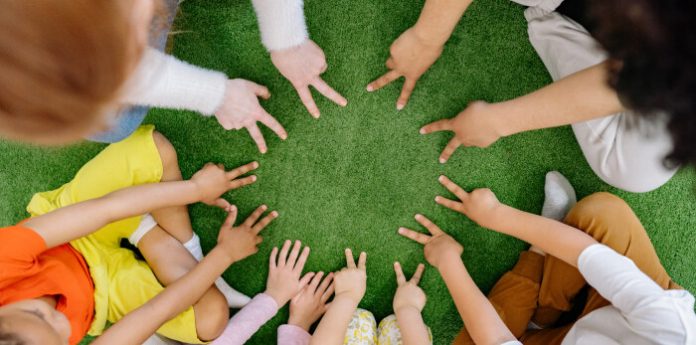The pandemic was quite challenging for teachers and students, and with schools opening, creating an outdoor classroom is a great idea. With this change in learning, it’s crucial to reconnect with nature from a fresh perspective during development.
In addition, virtual classrooms and social distancing norms made it harder for teachers to include outdoor classroom activities. But fortunately, now schools have reopened almost everywhere with many new opportunities.
Math & ELA | PreK To Grade 5
Kids see fun.
You see real learning outcomes.
Watch your kids fall in love with math & reading through our scientifically designed curriculum.
Parents, try for free Teachers, use for free
Therefore, many teachers are planning to create outdoor classrooms. In addition, the American Academy of Pediatrics has also advised constructing outdoor classrooms to offer more social interaction opportunities to students.
This guide will highlight all the key elements of outdoor classrooms. So, you can design an innovative and engaging outdoor classroom in your school.
Quick Tips to Effectively Manage Outdoor Classroom
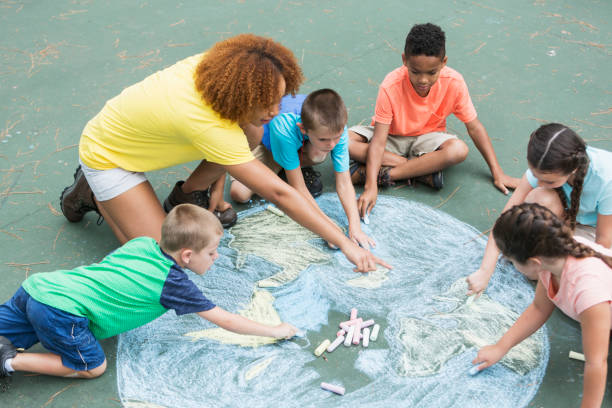
Outdoor classrooms are not a new concept. But, they have returned in the mainstream learning curriculum after a long time. Thus, many new teachers might find setting up an outdoor education field hard. So, for them, we have a few additional tips:
1. Define Your Objectives
Why are you setting up an outdoor classroom? Do you want to connect your class with nature? Or do you want to create an engaging learning environment in your classroom?
Whatever your reason is to set up an outdoor education environment — clearly define it. When you have a clear schedule, you can better plan the curriculum for your outdoor class.
2. Benefit a Child
As mentioned above, outdoor learning can benefit students, from their character development to academic performance. Thus, you should develop an outdoor learning curriculum in a way that can help your students.
For example, mathematics teachers can use natural resources like plants or trees to teach counting to preschoolers. When you ask preschoolers to count plants around them, it will likely engage them more than a textbook.
3. Prepare for Every Season
No matter how fancy weather tools you use, weather can trick you anytime. So, being an outdoor teacher, you should prepare yourself to deal with different climatic conditions. From your wardrobe to teaching techniques, you need everything to teach in all types of weather.
4. Show Excitement
If you want your students to be excited about outdoor classes, you must first show some excitement. You must explain to students how fun and exciting outdoor classes can be. You should wear outdoor gear and show excitement about outdoor learning to motivate your students.
5. Start Small
You can’t announce one day in your class that you will be teaching outside. It will only make your students nervous, confused, and maybe angry.
Thus, it would help if you slowly worked towards making outdoor fun for your students. For example, you can make it a rule in your class to eat lunch outside — no matter the weather. This will motivate students to spend more time outdoors and make it a parent’s habit to dress up children with appropriate outdoor clothing.
What is an Outdoor Classroom?
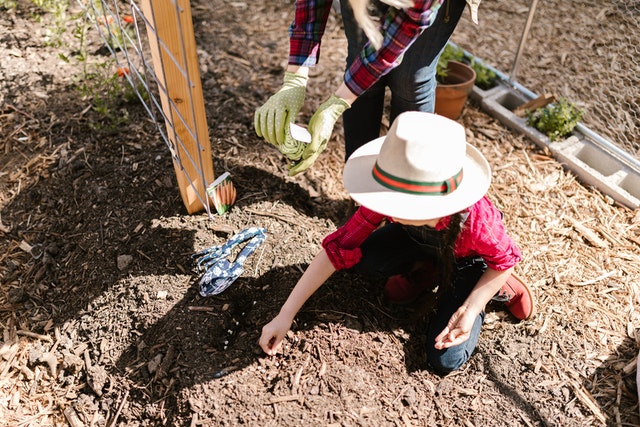
An outdoor classroom is where students interact with nature through different learning activities. The primary purpose of the outdoor classroom is to teach students the quality and benefits of nature.
Outdoor education is helpful in developing emotional behavior and intellectual skills among students. Many studies have found that outdoor classrooms can make children empathetic, self-disciplined, independent, and creative.
Why Organize Outdoor Classrooms?
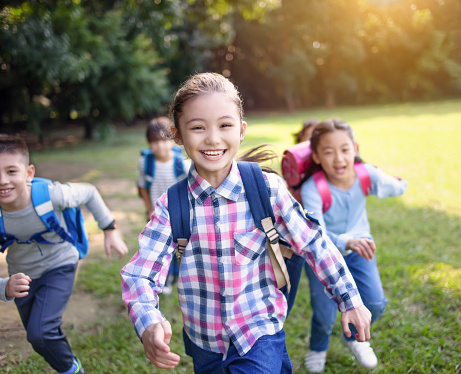
Outdoor classrooms are essential for overall character development. However, in this digital age, it is crucial for teachers to often organize outdoor classrooms to:
1. Improve Academic Performance
We know that outdoor educational activities can improve students’ academic performance. A study submitted to the California Department of Education focused on 255 school children from four primary schools in California and has shown surprising facts about outdoor classrooms. It found that students with set outdoor learning routines—
- 27% of students’ scores have improved.
- Students who learn outdoors have received higher ratings in social skills like self-esteem, peer relationships, self-motivation, etc.
Related Reading: Benefits of Culturally Responsive Teaching
2. Personal Development
Learning in an open environment will give total freedom to students. They can express their thoughts better when they are taken outside the classrooms.
Outdoor education can improve emotional behavior among students. They can learn emotions like empathy when collaborating with their classmates in the real world. Outdoor learning also stimulates creativity, problem-solving and intellectual skills among students.
3. Improve Health
It is common knowledge that connecting with nature can improve physical and mental health. When students run around and bask in the fresh sunlight, it will help their physical growth.
In addition, research has found that green plants and vistas reduce stress among children. Thus, teachers should design a green and open classroom to reduce stress in young learners.
4. Establish a Connection with Nature
Humans are nature lovers. We have natural biophilic tendencies – meaning we seek connection from nature. A person’s mood and behavior can change due to a lack of natural harmony.
According to a report, adverse outcomes in behavior and health can be seen when a person is deprived of nature. The report further states that difficulty concentrating and poor physical and mental health can result from limited connection with nature.
Therefore, for a healthy and happy classroom, taking your students outdoors occasionally is essential.
5. Helpful for Teachers
Outdoor learning is helpful for teachers as it is suitable for students. Teachers can easily create fun learning environments outdoors to increase students’ involvement. Also, teachers can use different activities to make mundane lessons enjoyable.
In addition, teachers are also humans. So, nature makes them healthy and puts them in the right mood.
What Can You Teach Students Outdoor?
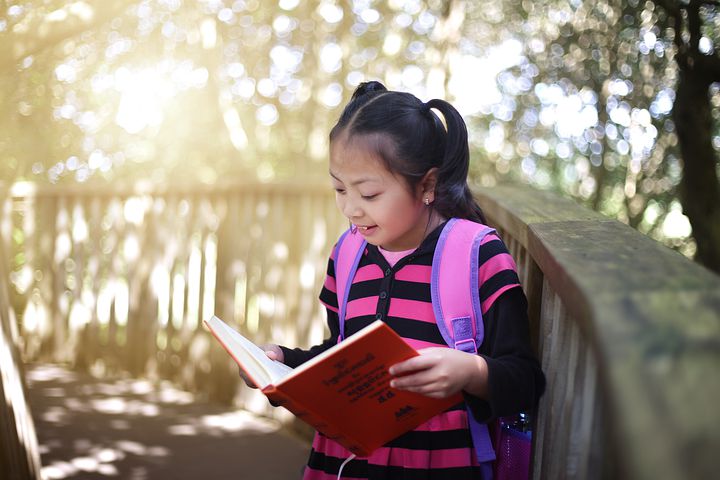
Teachers can use outdoor classrooms in several ways to teach different skills and subjects to their students, such as:
1. Reading
You can make your students read aloud outdoors to build confidence among them. Outdoor classrooms are large enough for students to speak louder and more precisely. When students read aloud in front of the entire class, this will give them the confidence to speak freely and share their opinions without hesitation. Plus, it will improve their vocabulary.
2. Observation
Nature is full of surprises and stories. So, you can let your class observe things around them to learn new things. For example, you can ask your students to identify different plants, birds, and stones in their surroundings. After that, you can share facts about the interesting things that your students observe around them.
3. Write
Your students will find no better inspiration than nature to write. They can find inspiration in plants, bees, or a mellow breeze blowing around them to write a unique story or poetry. So, in your literature curriculum, add outdoor learning where your students can connect with nature to stimulate their creativity.
4. Good Behavior
Do you want to try social-emotional learning activities in your classroom? Then, the outdoors gives you several options to create a social-emotional learning environment. The outdoors offers a serene and peaceful ambiance in which to practice meditation in your classroom.
You can also develop creative and empathetic skills among your students by letting them observe nature and its beautiful creatures. Whenever your students feel anxious or agitated, you can ask them to close their eyes and hear nature’s sounds, relaxing them immediately.
Related Reading: Best Classroom Rules for Students
Essential Outdoor Classroom Equipment
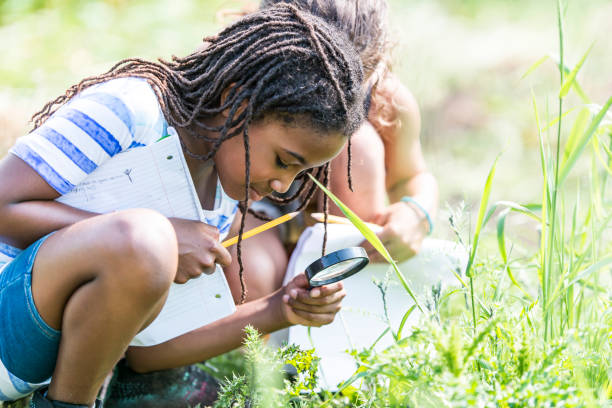
Are you excited to set up an outdoor classroom? Before that, you should gather a few essential pieces of equipment to make your outdoor class fun and comfortable, such as:
1. Location
You have to find a perfect place on your school premises to hold an outdoor class. Location matters the most in helping children connect with nature and learn academic lessons in a comfortable environment. Thus, it would be best if you considered these things before selecting a location for your outdoor class:
- Look for a shaded area where students can properly sit and have a clear whiteboard view without sun rays interruption.
- Keep the outdoor classroom near the entrance so students and teachers can quickly move in and out.
- Ensure that the outdoor area is accessible to all students. It will be harder for students with physical incapabilities to reach sloppy or uneven spaces.
- Construct a pathway to your outdoor class so students’ shoes won’t get stuck in mud during the rainy season.
2. Whiteboards
If you plan to conduct outdoor classes once or twice a week, carrying your whiteboard out every time will not be feasible. Thus, you can order a standing whiteboard made of heavy metal and put it outside. This way, you don’t have to carry a chart board or whiteboard outdoors every time.
3. Seating
Seating is yet another critical factor. It is essential to have a proper seating area in your outdoor classroom where students can easily write and keep their things. The best outdoor seats are lightweight chairs that you can place at a distance. Students can easily carry the chairs and help you move them after class.
4. Shades
Tree shadows are the best for conducting outdoor classes. Nothing is better than green leaves blocking sun rays and sending a mellow breeze your way while studying. But unfortunately, not many schools have enough large trees to shadow an entire class.
Therefore, many schools use cast shadows that they can use during a particular time. Some schools even use cheap shade sails or fabric to host outdoor classes. However, this requires permits and coding inspections. Plus, sails require frequent maintenance and fabric shades are useless during snow or rain.
5. Storage Facility
The last thing teachers want is to make multiple trips inside to bring pencils, marks, etc. It will only waste their time and distract students. Thus, you should install a storage unit near your whiteboard to store items like paper, pens, and other stationery.
The best outdoor storage options include sheds, lockers, or waterproof boxes. Ensure that outdoor storage units are fully stocked so you can teach without hassle.
6. Raised Beds
Add some raised beds in your outdoor classroom if your school budget allows. This will help you perform many social-emotional activities like meditation, teamwork, etc.
7. Miscellaneous Equipment
Teachers might require a lot of other equipment to run an outdoor classroom. For instance, teachers can use rain barrels and compost bins to teach students how to reuse natural resources. Teachers might also need weather tools to check the weather before moving class outdoors. Besides this, teachers can also use protective gear, anti-insect sprays, or dehydration kits to manage outdoor classrooms better.
Related Reading: Best Bulletin Board Ideas to Make Your Classroom Look Attractive
Outdoor Classrooms Are Must!
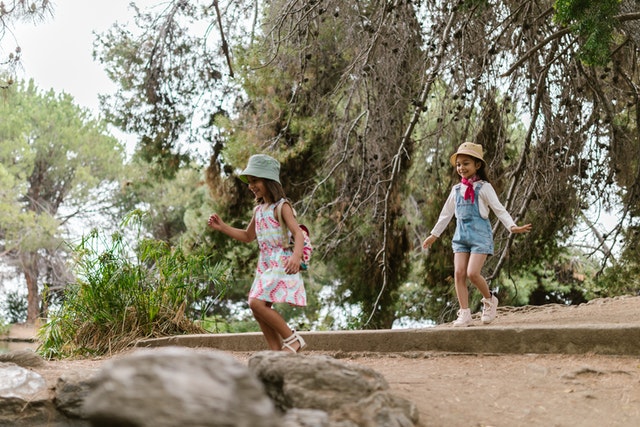
It is a must for teachers to include outdoor activities in their curriculum. Whether taking a class out for a whole day in a week or a few hours daily, you need to create a room for nature in the classroom curriculum.
If you want to focus on the overall development of your students, not only their academic performance, follow this guide to create an outdoor classroom. With little support from your school admin and parents, you can effortlessly design outdoor classrooms to connect students with nature.
Frequently Asked Questions
How much does it cost to build an outdoor classroom?
The outdoor classroom development cost depends on the scope and size of your project. Defining how many students will attend your outdoor class and your class’s capacity is vital before determining your budget. An outdoor classroom can cost anywhere between $500 to $150,000.
Do you need to get permission for an outdoor classroom?
You likely don’t need any more permission than your school administration for building an outdoor classroom. However, if you plan to build a shaded area or use public property as a park to hold an outdoor class, you might need to get permission from your local council.
What are some other names for outdoor classrooms?
The outdoor education environment is often referred to in many ways, such as outdoor school, forest school, outdoor learning, and wilderness education.

















